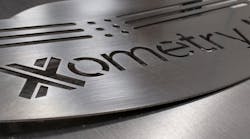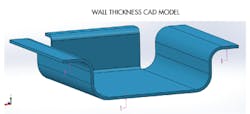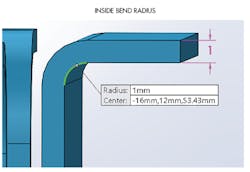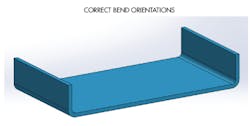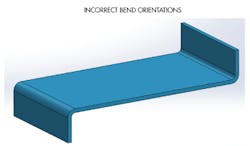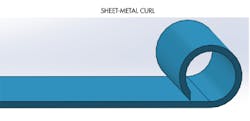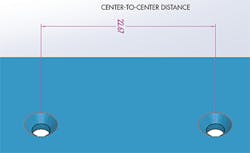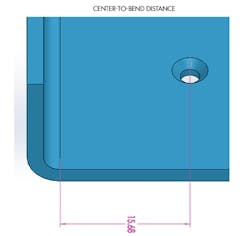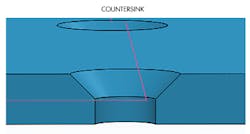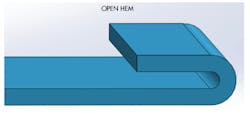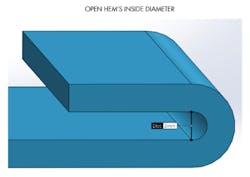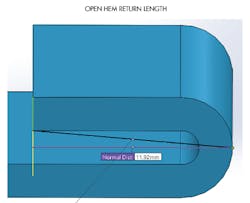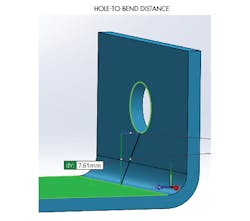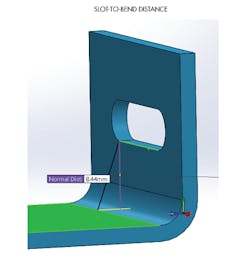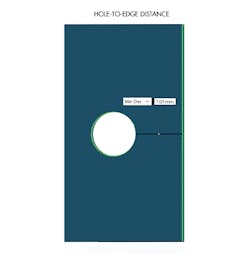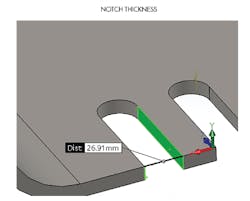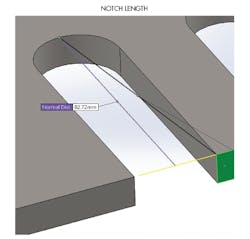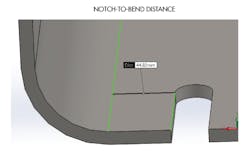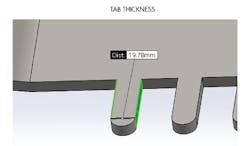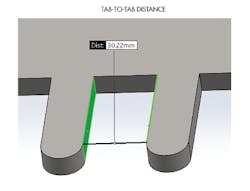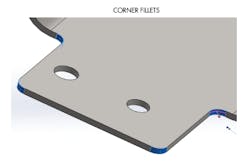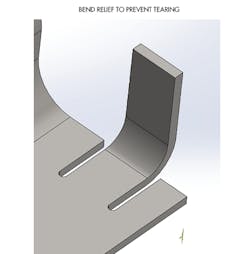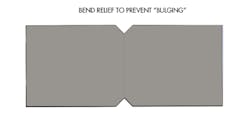Download this article in PDF format.
In sheet-metal fabrication, parts are formed from metal sheets by punching, cutting, stamping, and bending. 3D CAD files are created using a host of different CAD packages and then converted into machine code, which controls machines that precisely cut and form the sheets into the final parts. Sheet-metal parts are known for their durability, which makes them great for a wide variety of applications. Parts for low-volume prototypes and high-volume production runs are most cost-effective due to large initial setup and material costs.
Below are some tips and guidelines for designing sheet-metal parts. If you follow the design advice and maintain the tolerances expressed in this article, you are more likely to end up with parts that meet the needs of your designs.
Wall Thickness
Parts should maintain a uniform wall thickness throughout their entirety, but this should be easy because parts are formed from a single sheet of metal.
Bends
Sheet-metal brakes bend sheets into a part’s desired geometry. Bends in the same plane should be designed in the same direction to avoid having to reorient the part during manufacturing, which will save money and time. Another trick is to keep the bend radius consistent to keep parts more cost-effective. Thick parts tend to become inaccurate, so they should be avoided if possible.
Rule of thumb: To prevent parts from fracturing or distorting, make sure to keep the inside bend radius at least equal to the sheet’s thickness.
Curls
Holes should be placed away from the curl at least a distance equal to the radius of the curl plus the material’s thickness. Bends should be at least six times the material’s thickness plus the radius of the curl.
Rule of thumb: Outside radius of curls must be at least twice the sheet’s thickness.
Countersinks
Countersinks must be separated from each other by a distance of at least 8 times the material thickness, from an edge by at least 4 times the material’s thickness, and from a bend by at least 3 times the material’s thickness.
Rule of thumb: The maximum depth for a countersink is 3.5 times the material’s thickness.
Hems
Hems are folds to the edge of a part that create rounded, safe edges. Hems may be open, flat, or tear-dropped, and tolerances depend on the hem’s radius, material thickness, and features near the hem. It should be noted that flat hems should be avoided because they risk fracturing the material at the bend.
Rule of thumb: For open hems, the inside diameter should at least equal to the material thickness (larger diameters tend to lose their circular shapes); and the return length should be at least 4 times the material’s thickness. Tear-dropped hems must maintain an inside diameter of at least equal to the material’s thickness, an opening of at least ¼ the material’s thickness, and the return length should also be at least 4 times the material’s thickness.
Holes and Slots
Holes and slots may become deformed if positioned near a bend. The minimum distance that holes should be placed from a bend is a function of the material thickness, bend radius, and the hole’s diameter. Holes should be at least 2.5 times the material thickness plus the bend radius away from any bends. Slots should be placed 4 times the material’s thickness plus the bend radius away from the bend.
Be sure to put holes and slots at least twice the material’s thickness from an edge to avoid a “bulging” effect. And holes should be separated from each other by at least 6 times the material’s thickness.
Rule of thumb: Keep hole and slot diameters at least as large as the material’s thickness. Higher-strength materials require larger diameters.
Notches and Tabs
Notches must be at least one-eighth of an inch (3.175 mm) away from each other. For bends, notches must be at least 3 times the material’s thickness plus the bend radius. Tabs must be at least 0.04 inches (1 mm) from one another or the material’s thickness, whichever is greater.
Rule of thumb: Notches must be at least 0.04 inches (1 mm) thick or as thick as the material, whichever is greater. A tab should not be any longer than 5 times its width. Tabs must be at least 0.126 inches (3.2 mm) thick, or two times the material’s thickness, whichever is greater. Tab length should be no larger than 5 times its width.
Corner Fillets and Relief Cuts
Sheet-metal parts may have sharp corners, but designing a fillet of ½ the material’s thickness will make parts more cost-effective.
Relief cuts help parts avoid “overhangs” and tearing at bends. Overhangs become more prominent for thicker parts with smaller bend radii, and may even be as large as one half of the material’s thickness. Bends made too close to an edge may cause tearing.
Rule of thumb: Relief cuts for bends must be at least one sheet’s thickness in width, and be longer than the bend radius.
Greg Paulsen is Director of Applications Engineering at Xometry.
